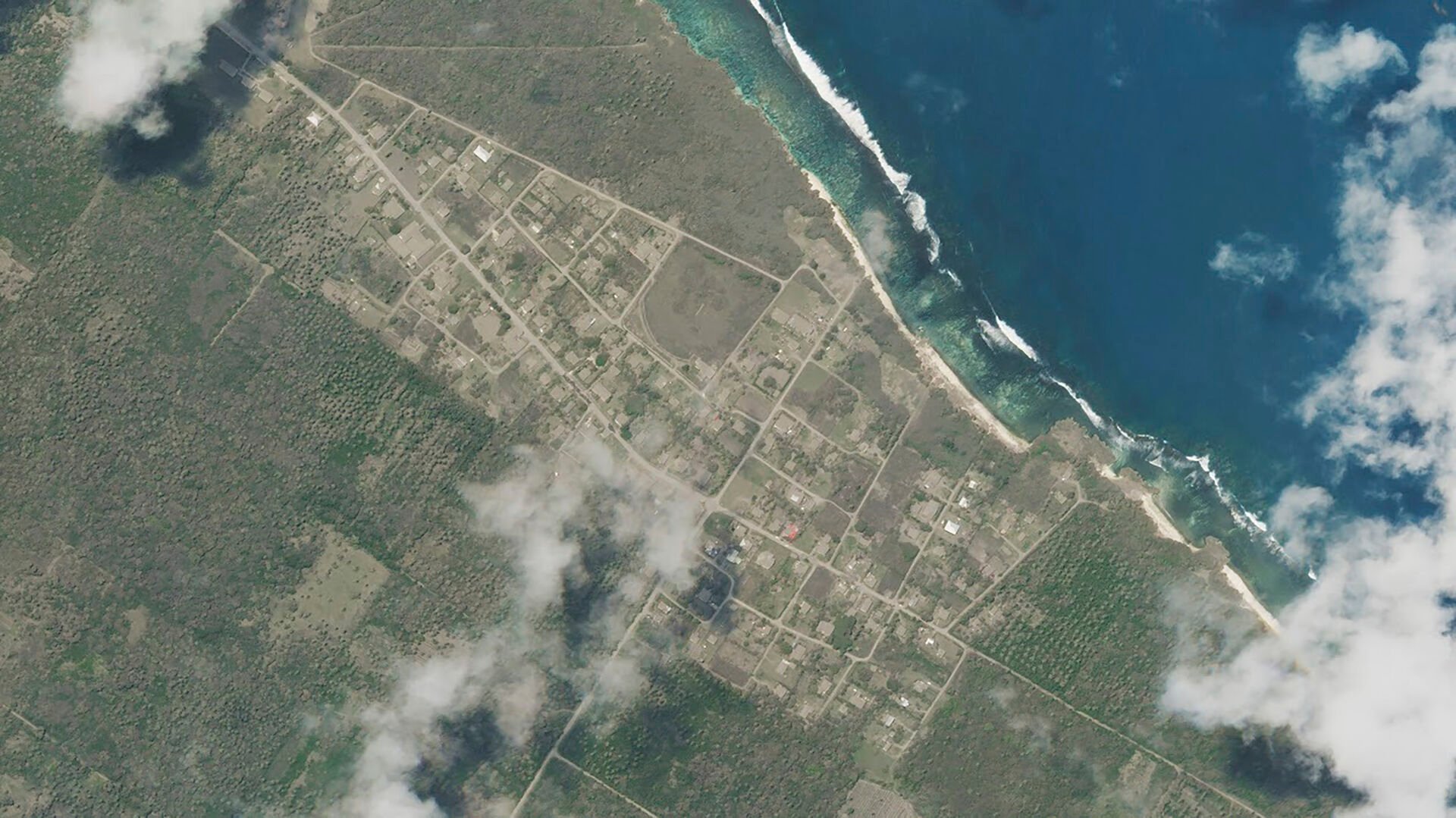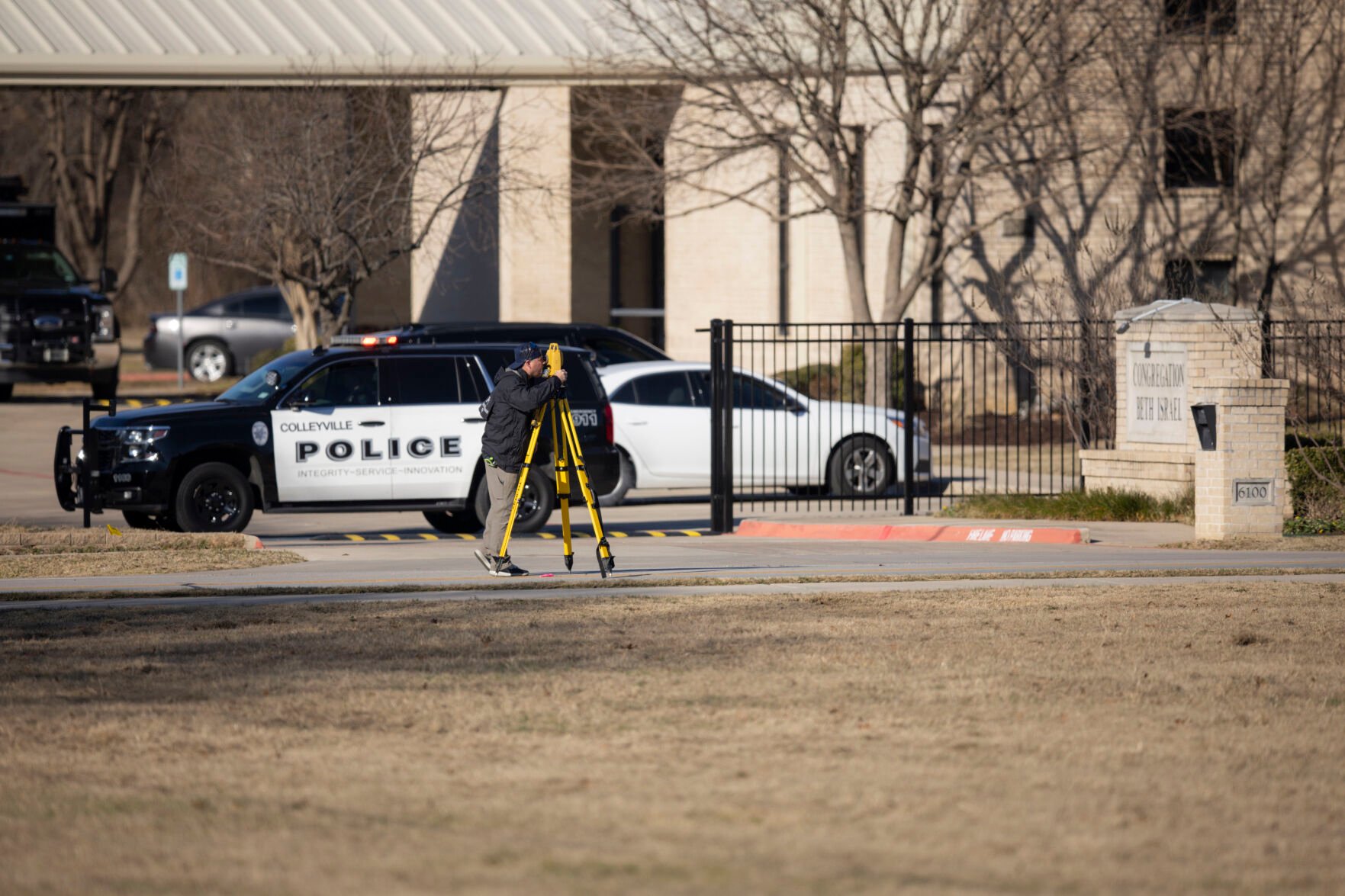
Hamish Blair
FILE - Nick Kyrgios of Australia gestures as he walks from Rod Laver Arena following his second round loss to Daniil Medvedev of Russia at the Australian Open tennis championships in Melbourne, Australia, Thursday, Jan. 20, 2022. On Friday, Jan. 21, The Associated Press reported on stories circulating online incorrectly claiming three tennis players — Kyrgios, Nikoloz Basilashvili, and Dalila Jakupovic — were forced to drop out of this year’s Australian Open after they experienced chest-related health issues. (AP Photo/Hamish Blair)
A roundup of some of the most popular but completely untrue stories and visuals of the week. None of these are legit, even though they were shared widely on social media. The Associated Press checked them out. Here are the facts:
Players not forced to drop out of Australian Open due to chest pains
CLAIM: Three tennis players — Nikoloz Basilashvili, Nick Kyrgios and Dalila Jakupovic — were forced to drop out of this year’s Australian Open after they experienced chest-related health issues.
THE FACTS: Neither Basilashvili nor Kyrgios has dropped out, and Jakupovic was not scheduled to participate in this year’s Australian Open.
The false rumor appeared in a widely shared article that also mentioned Australia’s decision to cancel the visa of top tennis player Novak Djokovic because he didn’t have a COVID-19 vaccine.

Andy Brownbill
FILE - Nikoloz Basilashvili of Georgia gestures during his first round match against Andy Murray of Britain at the Australian Open tennis championships in Melbourne, Australia, Tuesday, Jan. 18, 2022. On Friday, Jan. 21, The Associated Press reported on stories circulating online incorrectly claiming three tennis players, Basilashvili, Nick Kyrgios and Dalila Jakupovic — were forced to drop out of this year’s Australian Open after they experienced chest-related health issues.(AP Photo/Andy Brownbill)
The Jan. 10 article, published on a fringe website that has spread falsehoods about COVID-19, was titled, “Three players drop out of Australian Open with chest issues while Djokovic awaits his fate.” The story incorrectly claimed Basilashvili dropped out after he was seen “clutching his chest with respiratory difficulties” in a separate match during the ATP Cup. Videos do show Basilashvili seeking medical attention and retiring from an ATP Cup match in Sydney on Jan. 5, but the Georgian athlete did not drop out of the Australian Open, which started 12 days later, on Monday. In fact, he appeared in the tournament, losing on Tuesday to British player Andy Murray.
The article also claimed that Kyrgios, from Australia, was forced to drop out of the tournament after suffering breathing difficulties. Kyrgios did pull out of a tuneup tournament in Sydney on Jan. 10 after testing positive for COVID-19, but he has since recovered and played multiple matches in the Australian Open. The article’s claim that Jakupovic, a Slovenian player, was forced to retire from an Australian Open match after dropping to the ground is also unsupported. Jakupovic dropped to her knees while coughing heavily from wildfire smoke during a match in the Australian Open in January 2020, before COVID-19 had spread widely across the globe. She is not scheduled to participate in this year’s tournament, according to its official roster.
Thousands of social media users shared videos of Jakupovic collapsing in 2020 to falsely claim that the COVID-19 vaccine inhibited her breathing. There are no credible reports that any vaccine side effects have affected the Melbourne-based tennis tournament. Medical experts say there’s no evidence that COVID-19 vaccines have caused any wave of deaths or illnesses among athletes, either. Tennis Australia, which organizes the Australian Open, did not respond to emailed requests for comment.
— Associated Press writer Ali Swenson in New York contributed this report with additional reporting from Angelo Fichera in Philadelphia.
NHS didn’t create poster claiming COVID-19 causes Bell’s palsy
CLAIM: A photo shows a poster distributed by the National Health Service in England warning that COVID-19 vaccines cause Bell’s palsy.
THE FACTS: Any such poster was not issued by the NHS, the public health service confirmed to The Associated Press. Social media users shared a photo of what they claim is an official poster warning that COVID-19 vaccines cause Bell’s palsy. The poster includes the NHS logo and a photo of a girl, who appears to have facial paralysis.

Leon Neal
FILE - Medical staff and volunteers prepare shots of the COVID-19 vaccine a vaccination center in Ramsgate, England, Thursday, Dec. 16, 2021. On Friday, Jan. 21, The Associated Press reported on stories circulating online incorrectly claiming a photo of a poster distributed by the National Health Service in England warning that COVID-19 vaccines cause Bell’s palsy.(Leon Neal, Pool via AP)
It reads, “Public Health Warning” at the top, and says below that the COVID-19 vaccine causes Bell’s palsy, a condition where there is a weakness or paralysis to one side of the face. Photos of the unauthorized poster were displayed near London’s Heathrow Airport, according to the posts online. The NHS said Tuesday that it was not responsible for the poster. The Department of Health and Social Care in England, which funds and oversees health agencies, also confirmed to the AP that the poster did not come from the NHS. Scientists studying COVID-19 vaccines have not found any links between the inoculation and Bell’s palsy. During the trial phase of the Pfizer-BioNTech COVID-19 vaccine, the company reported four cases of Bell’s palsy. But experts say the number of cases in the trial were consistent with the levels reported in the general population. The U.S. Centers for Disease Control and Prevention says on its website that “available data were insufficient for FDA to conclude that these cases were causally related to vaccination.” The photo of the girl used in the posters can be found on several stock image websites with the caption “Bell’s palsy.” The BBC featured the photo in 2013 in a first-hand account about a BBC reporter’s recovery process from the condition.
— Associated Press writer Beatrice Dupuy in New York contributed this report.
Video shows river in Indonesia, not tsunami in Tonga
CLAIM: A video shows people being hit by an unexpected wave amid a tsunami in Tonga on Saturday.
THE FACTS: The video was taken in Indonesia, not Tonga, and has been online since December 2021. It shows people being hit by a wave on the Kampar River in Sumatra. But after the undersea Hunga Tonga Hunga Ha’apai volcano erupted near Tonga on Saturday, social media users misrepresented the video, falsely suggesting it showed people being hit by tsunami waves in the small Pacific nation.

HONS
This satellite image provided by Planet Labs PBC, shows Niutoua in Tongatapu, Tonga Monday, Jan. 17, 2022, after a huge undersea volcanic eruption. (Planet Labs PBC via AP)
The clip begins with a person punching a tree on a riverbank. Several other people then come running up, followed by a strong wave that crashes into all of them, sweeping some of the people off their feet. “Unexpected #Tsunami #HungaTongaHungaHaapai #Tsunami #Tonga #Earthquake,” read one widely-shared Twitter post of the clip, which has been viewed more than 1.4 million times on the platform. The clip, which features people speaking the Bahasa Indonesia language, was uploaded to YouTube on Dec. 6, 2021. The caption is tagged with Sungai Kampar, a river on the island of Sumatra. One of the people featured in the footage, who uses the name Rina Rina bono on social media, confirmed the location of the footage in a WhatsApp message to The Associated Press. The Kampar River is known for its tidal bores — large waves that flow upstream in rivers. Indonesia is about 5,000 miles away from Tonga. Other videos posted to social media on Saturday did show large waves washing ashore in coastal areas in Tonga, swirling around homes, a church and other buildings. Three of Tonga’s smaller islands were hit with waves of up to 49 feet, the AP reported.
— Associated Press writer Josh Kelety in Phoenix contributed this report, with additional reporting from Edna Tarigan in Jakarta, Indonesia.
-
What causes a tsunami? An ocean scientist explains the physics of these destructive waves
CPL Vanessa Parker/NZDF via AP, File
People around the world looked on in awe at the spectacular satellite images of an undersea volcano erupting in a giant mushroom cloud in the Pacific. Many wondered why the blast was so big, how the resulting tsunami traveled so far, and what will happen next.
New Zealand scientists Shane Cronin, a volcanology professor at the University of Auckland, and Emily Lane, a tsunami expert at the National Institute of Water and Atmospheric Research, help explain.
Photo: In this photo provided by the New Zealand Defense Force, volcanic ash covers roof tops and vegetation in an area of Tonga, Monday, Jan. 17, 2022. Thick ash on an airport runway was delaying aid deliveries to the Pacific island nation of Tonga, where significant damage was being reported days after a huge undersea volcanic eruption and tsunami.
CPL Vanessa Parker/NZDF via AP, File
People around the world looked on in awe at the spectacular satellite images of an undersea volcano erupting in a giant mushroom cloud in the Pacific. Many wondered why the blast was so big, how the resulting tsunami traveled so far, and what will happen next.
New Zealand scientists Shane Cronin, a volcanology professor at the University of Auckland, and Emily Lane, a tsunami expert at the National Institute of Water and Atmospheric Research, help explain.
Photo: In this photo provided by the New Zealand Defense Force, volcanic ash covers roof tops and vegetation in an area of Tonga, Monday, Jan. 17, 2022. Thick ash on an airport runway was delaying aid deliveries to the Pacific island nation of Tonga, where significant damage was being reported days after a huge undersea volcanic eruption and tsunami.
-
What causes a tsunami? An ocean scientist explains the physics of these destructive waves
Satellite image ©2022 Maxar Technologies via AP, File
The eruption on Saturday was incredibly explosive but also relatively brief. The plume rose into the air more than 30 kilometers (19 miles) but the eruption lasted only about 10 minutes, unlike some big eruptions that can continue for hours. Cronin said the power of the eruption of the Hunga Tonga Hunga Ha’apai volcano ranks among the world's biggest over the past 30 years, and the height of the plume of ash, steam and gas was comparable with the huge 1991 eruption of Mount Pinatubo in the Philippines, which killed several hundred people.
Photo: This satellite image provided by Maxar Technologies shows an overview of Hunga Tonga Hunga Ha'apai volcano in Tonga on Jan. 6, 2022, before a huge undersea volcanic eruption.
Satellite image ©2022 Maxar Technologies via AP, File
The eruption on Saturday was incredibly explosive but also relatively brief. The plume rose into the air more than 30 kilometers (19 miles) but the eruption lasted only about 10 minutes, unlike some big eruptions that can continue for hours. Cronin said the power of the eruption of the Hunga Tonga Hunga Ha’apai volcano ranks among the world's biggest over the past 30 years, and the height of the plume of ash, steam and gas was comparable with the huge 1991 eruption of Mount Pinatubo in the Philippines, which killed several hundred people.
Photo: This satellite image provided by Maxar Technologies shows an overview of Hunga Tonga Hunga Ha'apai volcano in Tonga on Jan. 6, 2022, before a huge undersea volcanic eruption.
-
-
What causes a tsunami? An ocean scientist explains the physics of these destructive waves
Planet Labs PBC via AP
The magma inside the volcano was under enormous pressure and had gasses trapped within it. A fracture in the rock likely induced a sudden drop in pressure, allowing the gas to expand and blast the magma apart. Cronin said the crater was sitting about 200 meters (650 feet) below the sea surface, a kind of Goldilocks depth for a big explosion in which seawater pours into the volcano and turns instantly into steam, adding to the rapid expansion and energy of the explosion. Any deeper and the extra pressure of the water would have helped contain the eruption.
Photo: In this satellite photo taken by Planet Labs PBC, an island created by the underwater Hunga Tonga Hunga Ha'apai volcano is seen smoking Jan. 7, 2022.
Planet Labs PBC via AP
The magma inside the volcano was under enormous pressure and had gasses trapped within it. A fracture in the rock likely induced a sudden drop in pressure, allowing the gas to expand and blast the magma apart. Cronin said the crater was sitting about 200 meters (650 feet) below the sea surface, a kind of Goldilocks depth for a big explosion in which seawater pours into the volcano and turns instantly into steam, adding to the rapid expansion and energy of the explosion. Any deeper and the extra pressure of the water would have helped contain the eruption.
Photo: In this satellite photo taken by Planet Labs PBC, an island created by the underwater Hunga Tonga Hunga Ha'apai volcano is seen smoking Jan. 7, 2022.
-
What causes a tsunami? An ocean scientist explains the physics of these destructive waves
AP Photo/Martin Mejia
Many scientists were surprised that a single eruption could produce a Pacific-wide tsunami of about 1 meter (3 feet) that smashed boats in New Zealand and caused an oil spill and two drownings in Peru. Lane said that oceanwide tsunamis are usually triggered by earthquakes that extend across huge areas rather than from a single volcano, essentially a tiny dot in the ocean. She said other factors may have been at play, such as an underwater flank of the volcano collapsing and displacing water. She said one interesting theory is that the shock wave, or sonic boom, from the volcano that traveled twice around the world may have pumped more power into the tsunami waves.
Photo: Oil pollutes Cavero beach in Ventanilla, Callao, Peru, Tuesday, Jan. 18, 2022, after high waves attributed to the eruption of an undersea volcano in Tonga caused an oil spill. The Peruvian Civil Defense Institute said in a press release that a ship was loading oil into La Pampilla refinery on the Pacific coast on Sunday when strong waves moved the boat and caused the spill.
AP Photo/Martin Mejia
Many scientists were surprised that a single eruption could produce a Pacific-wide tsunami of about 1 meter (3 feet) that smashed boats in New Zealand and caused an oil spill and two drownings in Peru. Lane said that oceanwide tsunamis are usually triggered by earthquakes that extend across huge areas rather than from a single volcano, essentially a tiny dot in the ocean. She said other factors may have been at play, such as an underwater flank of the volcano collapsing and displacing water. She said one interesting theory is that the shock wave, or sonic boom, from the volcano that traveled twice around the world may have pumped more power into the tsunami waves.
Photo: Oil pollutes Cavero beach in Ventanilla, Callao, Peru, Tuesday, Jan. 18, 2022, after high waves attributed to the eruption of an undersea volcano in Tonga caused an oil spill. The Peruvian Civil Defense Institute said in a press release that a ship was loading oil into La Pampilla refinery on the Pacific coast on Sunday when strong waves moved the boat and caused the spill.
-
-
What causes a tsunami? An ocean scientist explains the physics of these destructive waves
CPL Vanessa Parker/NZDF via AP
Another mystery is why the tsunami wasn't bigger and more destructive in Tonga, which sits almost on top of the volcano.
“That's the million dollar question,” Cronin said. “Looking at the images so far, the level of devastation is less than I was fearing.”
Authorities by Wednesday had confirmed three deaths in Tonga, with concerns remaining about people on some of the hard-hit smaller islands. Dozens of homes were destroyed.
Lane said that Tongans at least got some warning, both from the increased activity at the volcano the day before the eruption and from the incredibly loud bang when it erupted but before the tsunami hit, allowing many to scramble to higher ground. She said reefs, lagoons and other natural features may also have protected parts of Tonga, while amplifying the waves in certain areas.
Photo: In this photo provided by the New Zealand Defense Force, volcanic ash covers roof tops and vegetation in an area of Tonga, Monday, Jan. 17, 2022. Thick ash on an airport runway was delaying aid deliveries to the Pacific island nation of Tonga, where significant damage was being reported days after a huge undersea volcanic eruption and tsunami.
CPL Vanessa Parker/NZDF via AP
Another mystery is why the tsunami wasn't bigger and more destructive in Tonga, which sits almost on top of the volcano.
“That's the million dollar question,” Cronin said. “Looking at the images so far, the level of devastation is less than I was fearing.”
Authorities by Wednesday had confirmed three deaths in Tonga, with concerns remaining about people on some of the hard-hit smaller islands. Dozens of homes were destroyed.
Lane said that Tongans at least got some warning, both from the increased activity at the volcano the day before the eruption and from the incredibly loud bang when it erupted but before the tsunami hit, allowing many to scramble to higher ground. She said reefs, lagoons and other natural features may also have protected parts of Tonga, while amplifying the waves in certain areas.
Photo: In this photo provided by the New Zealand Defense Force, volcanic ash covers roof tops and vegetation in an area of Tonga, Monday, Jan. 17, 2022. Thick ash on an airport runway was delaying aid deliveries to the Pacific island nation of Tonga, where significant damage was being reported days after a huge undersea volcanic eruption and tsunami.
-
What causes a tsunami? An ocean scientist explains the physics of these destructive waves
CPL Vanessa Parker/NZDF via AP
The ash that has coated Tonga is acidic but not poisonous, Cronin said. Indeed, he has been advising Pacific responders that people may still be able to drink from their rainwater supplies even if some ash has fallen in, which will make the water more acidic and salty. He said it was a question of applying the taste test and if water became scarce, it would be better drinking ash-tainted water than stagnant water that might be contaminated with bacteria. New Zealand and other nations are trying to get water and other supplies to Tonga as quickly as possible. Cronin said all of Tonga's soil comes from volcanic ash and the latest dump of ash would quickly wash into the ground and make the nation more fertile.
Photo: In this photo provided by the New Zealand Defense Force, an Orion plane flies over Tonga where volcanic ash covers roof tops and vegetation, Monday, Jan. 17, 2022. Thick ash on an airport runway was delaying aid deliveries to the Pacific island nation of Tonga, where significant damage was being reported days after a huge undersea volcanic eruption and tsunami.
CPL Vanessa Parker/NZDF via AP
The ash that has coated Tonga is acidic but not poisonous, Cronin said. Indeed, he has been advising Pacific responders that people may still be able to drink from their rainwater supplies even if some ash has fallen in, which will make the water more acidic and salty. He said it was a question of applying the taste test and if water became scarce, it would be better drinking ash-tainted water than stagnant water that might be contaminated with bacteria. New Zealand and other nations are trying to get water and other supplies to Tonga as quickly as possible. Cronin said all of Tonga's soil comes from volcanic ash and the latest dump of ash would quickly wash into the ground and make the nation more fertile.
Photo: In this photo provided by the New Zealand Defense Force, an Orion plane flies over Tonga where volcanic ash covers roof tops and vegetation, Monday, Jan. 17, 2022. Thick ash on an airport runway was delaying aid deliveries to the Pacific island nation of Tonga, where significant damage was being reported days after a huge undersea volcanic eruption and tsunami.
-
-
What causes a tsunami? An ocean scientist explains the physics of these destructive waves
CPL Vanessa Parker/NZDF via AP
Huge volcanic eruptions can sometimes cause temporary global cooling as sulfur dioxide is pumped into the stratosphere. But in the case of the Tonga eruption, initial satellite measurements indicated the amount of sulfur dioxide released would only have a tiny effect of perhaps 0.01 degree Celsius (0.02 Fahrenheit) global average cooling, said Alan Robock, a professor at Rutgers University.
Photo: In this photo provided by the New Zealand Defense Force, a crew member from an Orion aircraft looks out the window as it flies over an area of Tonga that has heavy ash fall from a volcanic eruption in an area of Tonga, Monday, Jan. 17, 2022. Thick ash on an airport runway was delaying aid deliveries to the Pacific island nation of Tonga, where significant damage was being reported days after a huge undersea volcanic eruption and tsunami.
CPL Vanessa Parker/NZDF via AP
Huge volcanic eruptions can sometimes cause temporary global cooling as sulfur dioxide is pumped into the stratosphere. But in the case of the Tonga eruption, initial satellite measurements indicated the amount of sulfur dioxide released would only have a tiny effect of perhaps 0.01 degree Celsius (0.02 Fahrenheit) global average cooling, said Alan Robock, a professor at Rutgers University.
Photo: In this photo provided by the New Zealand Defense Force, a crew member from an Orion aircraft looks out the window as it flies over an area of Tonga that has heavy ash fall from a volcanic eruption in an area of Tonga, Monday, Jan. 17, 2022. Thick ash on an airport runway was delaying aid deliveries to the Pacific island nation of Tonga, where significant damage was being reported days after a huge undersea volcanic eruption and tsunami.
-
What causes a tsunami? An ocean scientist explains the physics of these destructive waves
NICT via AP
Cronin envisions two main scenarios for the volcano. The first is that it has exhausted itself for now and will go quiet for the next 10 to 20 years as magma slowly returns. A second scenario is that new magma rises up quickly to replace that which exploded, in which case there might be ongoing eruptions. But he believes the cracks and rifts caused by Saturday's big explosion will allow more gas to escape, and subsequent eruptions won't be as big, at least for now. Both Cronin and Lane agree there needs to be much better monitoring of the volcano — and others in Tonga — to help better predict future events.
Photo: This combination of satellite images taken by Himawari-8, a Japanese weather satellite operated by Japan Meteorological Agency and released by National Institute of Information and Communications Technology (NICT), shows an undersea volcano eruption of the Pacific nation of Tonga Saturday, Jan. 15, 2022.
Associated Press Science Writer Seth Borenstein in Kensington, Maryland, contributed to this report.
NICT via AP
Cronin envisions two main scenarios for the volcano. The first is that it has exhausted itself for now and will go quiet for the next 10 to 20 years as magma slowly returns. A second scenario is that new magma rises up quickly to replace that which exploded, in which case there might be ongoing eruptions. But he believes the cracks and rifts caused by Saturday's big explosion will allow more gas to escape, and subsequent eruptions won't be as big, at least for now. Both Cronin and Lane agree there needs to be much better monitoring of the volcano — and others in Tonga — to help better predict future events.
Photo: This combination of satellite images taken by Himawari-8, a Japanese weather satellite operated by Japan Meteorological Agency and released by National Institute of Information and Communications Technology (NICT), shows an undersea volcano eruption of the Pacific nation of Tonga Saturday, Jan. 15, 2022.
Associated Press Science Writer Seth Borenstein in Kensington, Maryland, contributed to this report.
Posts recirculate old, altered photo of fake CNN banner
CLAIM: A CNN broadcast displayed a banner stating that a shooter was “factually Arabic, but morally white.”
THE FACTS: The image has been manipulated to feature fake text. A CNN representative previously confirmed to The Associated Press that the network didn’t broadcast the banner. The manipulated image was widely shared in recent days by social media users who interpreted it as a real still from a CNN broadcast about the gunman who took four people hostage at a Texas synagogue on Jan. 15.

Brandon Wade
Law enforcement process the scene in front of the Congregation Beth Israel synagogue, Sunday, Jan. 16, 2022, in Colleyville, Texas. A man held hostages for more than 10 hours Saturday inside the temple. The hostages were able to escape and the hostage taker was killed. FBI Special Agent in Charge Matt DeSarno said a team would investigate "the shooting incident." (AP Photo/Brandon Wade)
But the altered image originated as satire in 2021 following a shooting in Colorado and is now being recirculated on social media with incorrect claims about coverage of the Texas hostage situation. In the doctored image, CNN host Brooke Baldwin and correspondent Lucy Kafanov are depicted in a split-screen display. A fabricated chyron below the journalists states, “DEVELOPING STORY INVESTIGATION: SHOOTER WAS FACTUALLY ARABIC, BUT MORALLY WHITE.”
But the banner is fake and the image has been manipulated. The AP previously reported that the fabricated image emerged in March 2021 on The Babylon Bee, a Christian satirical website. The original image came from a broadcast that month about the shooting at a Boulder, Colorado, supermarket in which 10 people were killed. The actual CNN banner stated: “COLORADO SHOOTING SUSPECT BOOKED INTO JAIL TODAY,” according to a TV news archive. At the time, a spokesperson for CNN confirmed in an email to the AP that the chyron on The Babylon Bee site was fabricated and didn’t match the network’s font. In some of the newer versions of the falsified photo, the CNN dateline listing “Boulder, Colorado,” was cropped out of view. The gunman who took four people hostage during a 10-hour standoff at the synagogue in a suburb of Dallas, which ended in his death, was identified as Malik Faisal Akram, a 44-year-old British citizen who arrived in the U.S. roughly two weeks ago on a tourist visa, officials said.
___





